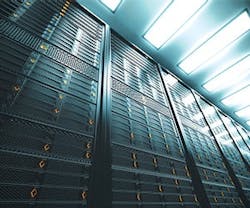Beware Humidity in Free-Cooled Data Centers
Free cooling strategies like increasing the operating temperature and bringing in cool outside air can significantly lower data center energy costs and PUE, but it can also lead to damaging levels of humidity, according to new research by Rutgers University. The study underscores the importance of careful humidity control in all server rooms and data centers, particularly those that rely on free cooling methods.
To examine the potential impact on data center component life and determine whether free cooling could increase the total cost of ownership, the researchers collected data from nine worldwide Microsoft data centers that host over 1 million disk drives. Six were located in areas characterized as hot and humid, while three were located in cool and dry conditions. The data suggest that the impact of both temperature and temperature variation on disk reliability is much less significant than the impact of relative humidity, the study notes.
The results were stark – humidity-related failures in the free-cooled data centers without humidity controls were so high that they could be easily distinguished from data centers with humidity controls simply by looking at annualized failure rates (AFRs). The data centers where the internal environment was consistently or frequently dry had the lowest failure rates regardless of which cooling technology they used, while facilities in hot, humid areas with the highest internal relative humidity noted an AFR increase of 107-260% over the baseline facility with the lowest failure rate, a chiller-cooled data center in a cool and dry area.
However, the study notes that free cooling does not necessarily lead to a high failure rate on its own. The local climate is important, as is careful humidity control. One of the data centers examined, a free-cooled facility in a cool and dry area, actually had a lower failure rate than a comparable facility with a water-side economizer that was also located in a cool and dry area. The data center with the water-side economizer had an AFR 40% higher than the baseline facility, while its free-cooled counterpart’s AFR was only 20% higher.
Internal relative humidity seemed to have the biggest impact on disk lifetime, with average temperature exerting a lower (but still significant) impact, the researchers note. “High relative humidity degrades reliability significantly, having a much more substantial impact than temperature or temperature variation,” the researchers write. “Thus, the design of free-cooled data centers and their servers must consider the relative humidity to which components are exposed.”
